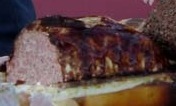
Campagne Pâte
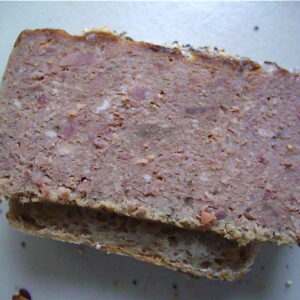
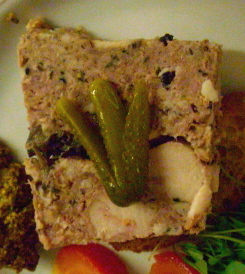
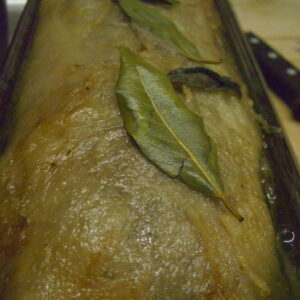
Trying to get a recipe for pâte, my friend Brad shared a terrific primer on rural French hunting traditions, as seen here in tips on wild boar pâté. But while fun to read and imagine, Brad’s instructions were better set in a country forest than the jungles of New York City.
The truth is that I have a wine dinner coming up at work featuring some Bordeaux’s from Sotheby’s. So I endeavored to make my own pâté or terrine, or whatever you may want to call it!. What better in the current heat then a game pâté. The names are somewhat confusing as they’re meanings refer to only parts of what makes up the final product. Terrine by name is the vessel in which the meat is cooked, Pâté is roughly translated as paste. My guide is a recipe for terrine I found from a charcuterie site that has a PDF file full of sausage recipes. Julia Child has a standard and wonderful version in her book,Mastering The Art Of French Cooking. Other good sources include the always useful Larousse Gastronomic, Stephane Reynaud’s recipe rich,Terrine or even the reference tool of no other than Auguste, Escoffiers Cook Book which fantastic guides as well as good choices.
Some points to follow when making a pâté:
- cold ingredients, (freeze the meat for up to an hour)
- fresh ingredients
- cold utensils, ( I put my parts in the refrigerator)
- Add fat last, ( fat back breaks down easily, it has no connective tissue.)
- sharp knives
- proper sanitation
- Add eggs last, ( because they would be too wet and difficult to incorporate.)
- Salt before emulsifying (it helps break down proteins in meat)
- Never salt fat ,( draws out too much moisture, making meat harder to breakdown)
Farce or force meat: too much meat will make the pâté dry, too much fat and it will be greasy. Liver is a flavor component,and can vary from foie gras, poultry, or even pork liver can be added. Variations of coarse cut or fine paste determine the final texture and taste
The ratio for a pâté is 2 parts Fowl, (duck, pheasant) or whatever meat is the dominant component, 1 part fat and 1 pork, about a 1/2 to 2/3 part liver is added . From this I take a third of the ground meat and process 1/3rd of the mix and puree to a fine paste, finally adding the eggs.
From the basic meat component you add in flavorings and various dice of meat either from the same processed bird, veal, pork meat and even vegetables, it’s basically your choice about layering flavor and look of the final product.
Fillings:Depending on your taste filling can include the dominant meat, (usally the breast meat for fowl, ham or vegetables like artichokes, peppers.When filling the terrine or mold you want to give a design to the way you lay out your pâté so you will get a mosaic effect, or if making a say a pâté de campagne which is filled with more liver you won’t have that defined look, it’s a more rustic meat that is more flavor driven,
Flavoring:Then there is the spice and herbs that may vary according to flavor profile or whim. Just as long as you follow the ratio of meat to fat in the terrine recipe, the variations are endless.You may add in fruits and nuts, fresh or dry herbs. Quatre épice or other spice mixes are just one of the many possibilities.
Pâtés and terrines are a mystery meat for sure, but following some basic rules and some kitchen skills you can make a French classic at home without much stress, and besides with a slice of good country bread…délicieux’s
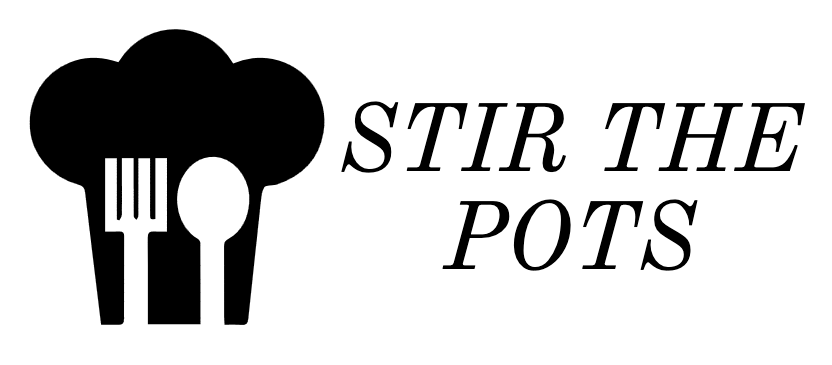



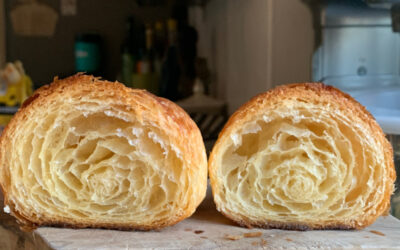
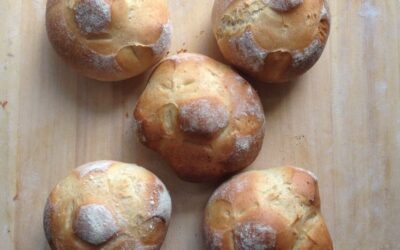
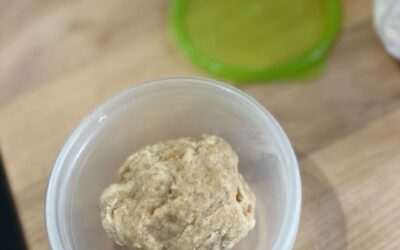
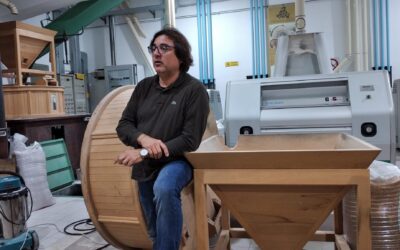
0 Comments